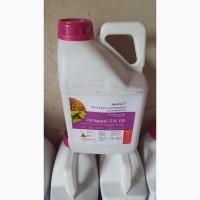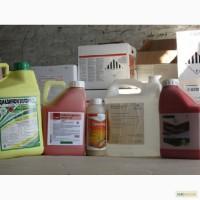sell / buy
= Suprim EV - fungicide against fungal diseases in crops of cereals, rapeseed, sunflower, beet, Kiev region
price 12.5 || 128$
Регіон: вся Україна,
Kiev region
(Vyshgorodok)
Оновлено:
seprim ™ EV-used on winter wheat, rail, rail, rail, rail. sunflower and sugar beet from a number of fungal diseases affecting the ground vegetative part of the plant.
Active substance - tebuconazole 133 g / l, burst 267 g / l
Тип дії - Системний
Manufacturer - Adam
Tarne unit - 5 l, the price is specified for 1 liter
Culture - cereals, sunflower, rape, beet
Diseases - alternariosis, root rot, powdery mildew, rust, sclerotiniosis, phomosis, phomopsis, fusariosis, cercosporiosis, cylindrosporiosis
= Working solution - 200-400 l/ha
CULTURE TRIAL L/ha.
* Winter Winter 0,75 – 1,5
= * Barley Spring 0.8 - 1,2
* Rape 1.0 - 1.5
* Sunflower 1.0 - 1.5
* Sugar beet 0.75 - 1,0
Systemic fungicide Suprim ™ EV is used for Protection of grain= spiky crops, rapeseed, sugar beet and sunflower from fungal diseases. (// tractor-service.com)
Advantages:
Optimal combination of two highly active systemic and translaminary substances.
Well pronounced "stop - effect" and therapeutic action.
Reliable wheat protection against fusariosis of the ear.
Lack of phytotoxicity.
The best control of phomopsis and phomosis on sunflower.
Spraying begins in warm, windless weather in visual manifestations of the disease. To achieve a positive result, the processing is carried out 2 times a season, depending on the weather and the degree of damage and culture on which it is used.
= Application of Suprim Fungicide ™ EV:
It is possible to use fungicide at all stages of plant development.
To do this, use small -cape splashes.
After contact with the mushroom, the active substances block the synthesis of enzyme cells in the fungus. The fungicide shows therapeutic and preventive properties, actively inhibits the growth of spores and mycelium.
The protective effect of the fungicide lasts up to two weeks.
Rain will take a few hours after treatment will not affect the fungicide.
Suprim ™ EV can be used in tank mixtures along with other pesticides that are used in the same time.
When mixing drugs, compatibility check is required. Not phytotoxic to crops used.
For one hectare of crops use 200-400 liters of finished solution.
Active substance - tebuconazole 133 g / l, burst 267 g / l
Тип дії - Системний
Manufacturer - Adam
Tarne unit - 5 l, the price is specified for 1 liter
Culture - cereals, sunflower, rape, beet
Diseases - alternariosis, root rot, powdery mildew, rust, sclerotiniosis, phomosis, phomopsis, fusariosis, cercosporiosis, cylindrosporiosis
= Working solution - 200-400 l/ha
CULTURE TRIAL L/ha.
* Winter Winter 0,75 – 1,5
= * Barley Spring 0.8 - 1,2
* Rape 1.0 - 1.5
* Sunflower 1.0 - 1.5
* Sugar beet 0.75 - 1,0
Systemic fungicide Suprim ™ EV is used for Protection of grain= spiky crops, rapeseed, sugar beet and sunflower from fungal diseases. (// tractor-service.com)
Advantages:
Optimal combination of two highly active systemic and translaminary substances.
Well pronounced "stop - effect" and therapeutic action.
Reliable wheat protection against fusariosis of the ear.
Lack of phytotoxicity.
The best control of phomopsis and phomosis on sunflower.
Spraying begins in warm, windless weather in visual manifestations of the disease. To achieve a positive result, the processing is carried out 2 times a season, depending on the weather and the degree of damage and culture on which it is used.
= Application of Suprim Fungicide ™ EV:
It is possible to use fungicide at all stages of plant development.
To do this, use small -cape splashes.
After contact with the mushroom, the active substances block the synthesis of enzyme cells in the fungus. The fungicide shows therapeutic and preventive properties, actively inhibits the growth of spores and mycelium.
The protective effect of the fungicide lasts up to two weeks.
Rain will take a few hours after treatment will not affect the fungicide.
Suprim ™ EV can be used in tank mixtures along with other pesticides that are used in the same time.
When mixing drugs, compatibility check is required. Not phytotoxic to crops used.
For one hectare of crops use 200-400 liters of finished solution.
|
= store, contacts | |
= Yuri/= Reviews, Info./оцінка активності | |
|
Phone:
+38 (XXXXXXX || Part 214
показати
| |
ID ad: #933374
= (added by the registered user, registration date: 10-08-2016)
=
Action type - system added/updated: 03-03-2025 09: 15= (Topical, to: 03-03-2026)
Constant ads:
Shows / views for today:?, Total:?
=







